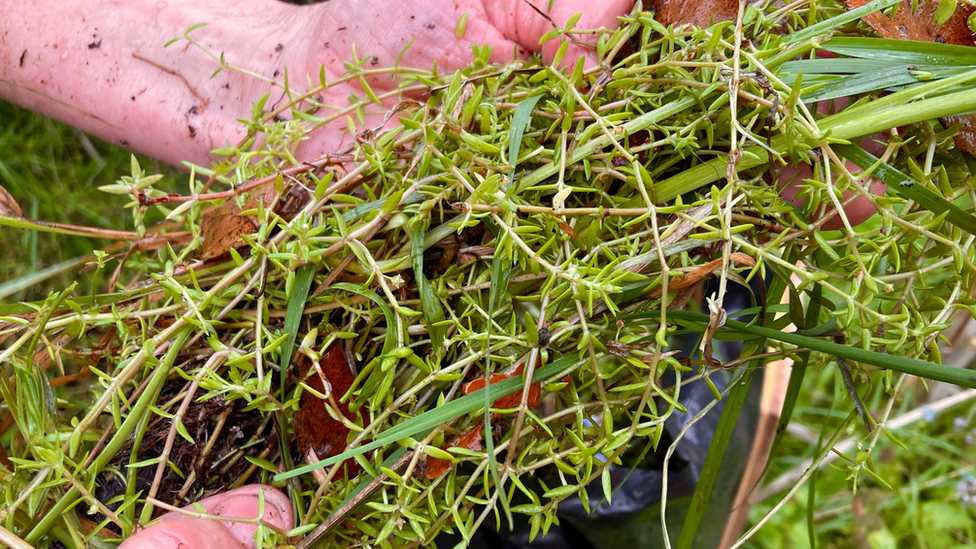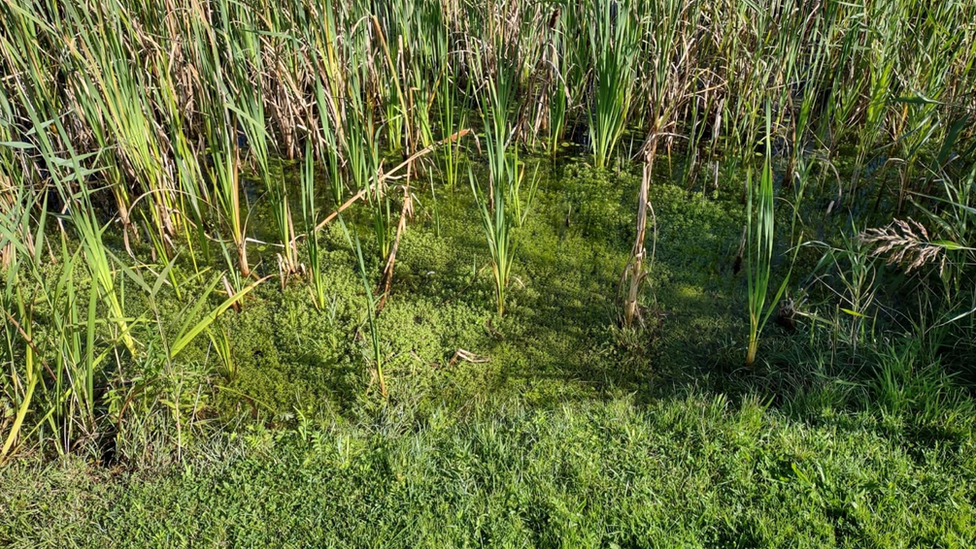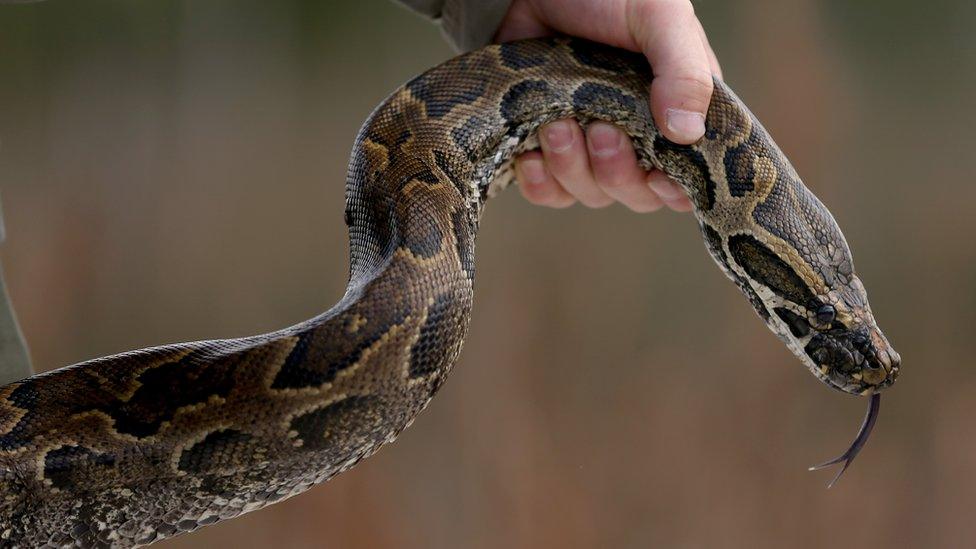Australian stonecrop 'choking out' habitat at Watton reserve
- Published

The destructive Australian stonecrop was discovered in 10 ponds at Norfolk Wildlife Trust's Thompson Common wetlands reserve, near Watton
A fast-growing invasive aquatic plant threatening to "choke out" its habitat is being removed from a wetland reserve.
Australian stonecrop, also known as New Zealand pygmy weed, has been crowding out native plants and animals at Thompson Common, near Watton, Norfolk.
It was found in 10 ponds at the site, which is known for its 400 pingos, or dips, formed during the last Ice Age.
"It's an increasing problem," said Norfolk Pond Project's Andy Hind.

Andy Hind, from the Norfolk Pond Project, said the invasive species was "choking out" its habitat
"It's quite widespread in the UK and other parts of Europe now, where it's choking out a lot of the really important native vegetation.
"By destroying that, it has really serious impacts on the eco-system as a whole."

Australian stonecrop, sometimes called pygmy pond weed, can sprout from a tiny leaf or stem fragment
What is Australian stonecrop?
Sometimes referred to by its botanical name crassula helmsii, Australian stonecrop, external is believed to have been introduced from Tasmania in the early 1900s.
The succulent-type plant is particularly problematic in sensitive aquatic habitats, such as wetlands and ponds, where it dominates native flora and reduces oxygen levels by forming dense, impenetrable mats.
The invasive species can tolerate extreme environmental conditions and is very difficult to manage.
In 2014, it was banned from sale in the UK.

Norfolk Wildlife Trust's Julia Mumford-Smith urged people to be on the lookout for the aquatic invader
Julia Mumford-Smith of the Norfolk Wildlife Trust, which is responsible for the wetlands reserve, has been leading the eradication effort following a grant from Anglian Water's Invasive Species Fund, external.
She warned it was vital to be vigilant about the plant.
"Have a look in your garden ponds and your village ponds and see if you've got this," said Ms Mumford-Smith.
"Generally, people don't notice it until it's completely taken over the pond and then it's really, really difficult to deal with."
Anyone who finds Australian stonecrop has been urged to burn or bury it.

The plant can grow in both aquatic and semi-aquatic conditions

Find BBC News: East of England on Facebook, external, Instagram, external and Twitter, external. If you have a story suggestion email eastofenglandnews@bbc.co.uk
- Published11 July 2022

- Published3 December 2019

- Published29 January 2013
